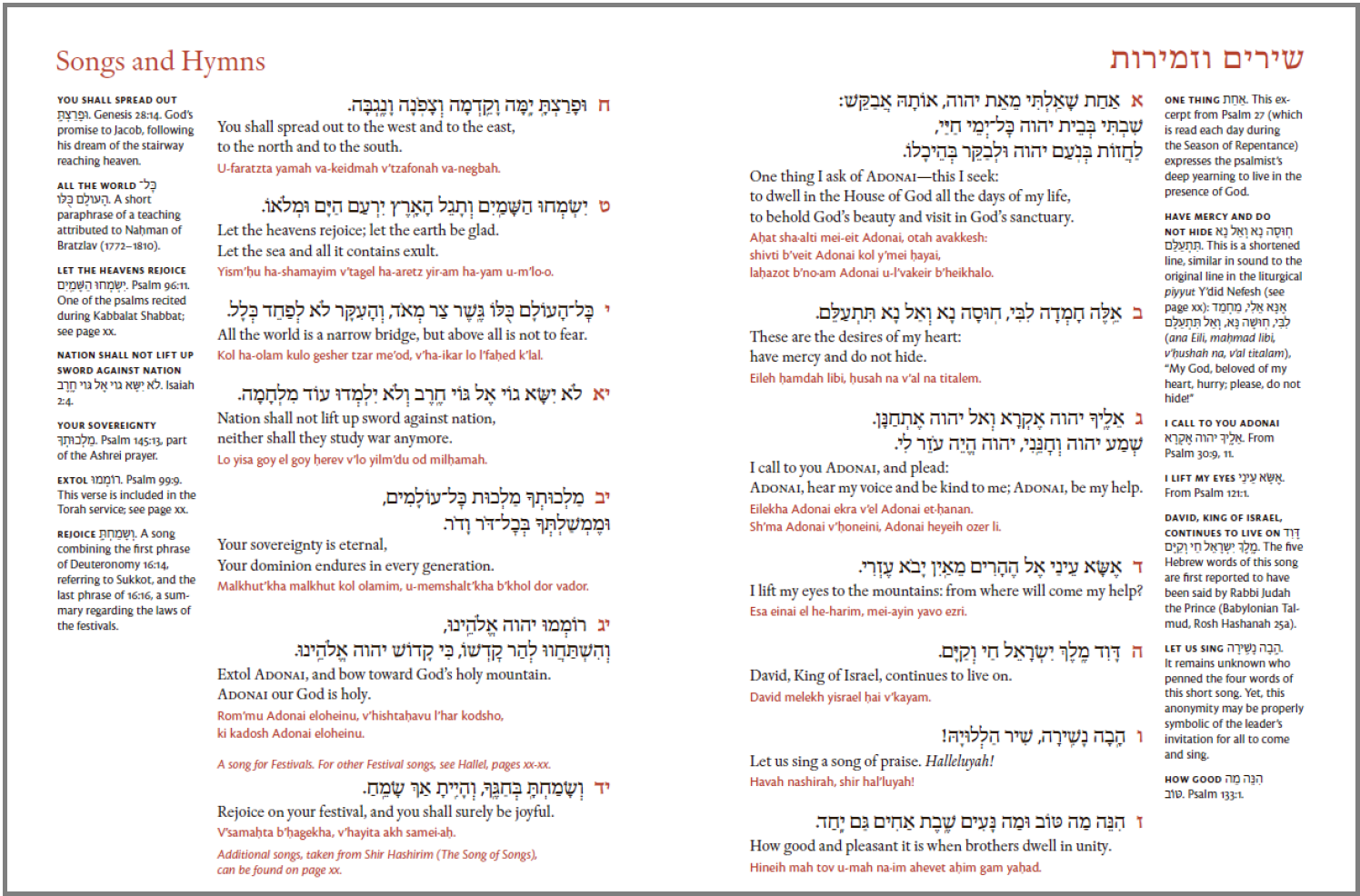Conservative Judaism Unveils a New Egalitarian, Gay-friendly
Prayer Book
Judy Maltz Haaretz Newspaper, Feb 10, 2016 — Copied
from Archive.org
Editors say they drew on more than 500 different sources in
compiling the final version, including 'traditions from the full
array of Jewish cultures.'

Prayer
book belonging to members of the Subbotnik
community in Beit Shemesh.
Photo credit: Oren Nachson
Apparently the newspaper had no photo of the
new book cover, so they used a photo of a prayer book brought
to Israel by immigrant Subboniki.
Though the photo above has little, if anything, to do with this
story, it is the first online image of a Russian Subbotnik
book, and tells us that some live just west of
Jerusalem.
Some words just no longer work in the context of prayer.
“You can’t describe God as ‘awesome’ anymore,” says Conservative
rabbi and author Edward Feld, by way of example. "Language and the
way we use language changes, so each generation needs its own
translation."
Feld is senior editor of the newly released Siddur Lev Shalem prayer
book for Shabbat and Festivals, a project overseen by the Rabbinical
Assembly of the Conservative movement.
The new egalitarian, gay-friendly prayer book, five years in the
making, is based on the model of the Makhzor Lev Shalem High
Holidays prayer book, which has sold over 320,000 copies since it
was published in 2009.
“The Conservative movement, as reflected in this siddur, both
upholds and honors our rich and extensive Jewish tradition and,
consistent with the perspective of the ancient rabbis, understands
Judaism as responsive to social change when that change promotes the
essential Jewish religious value that humans are created in the
divine image,” said Rabbi Julie Schonfeld, executive vice president
of the Rabbinical Assembly, in a press statement.
To encourage worshippers who don’t read Hebrew to participate in the
services, the new prayer book includes far more transliteration than
its predecessor – the Siddur Sim Shalom, first printed in 1989. It
also contains an expanded collection of prayers with appropriate
wording for gay couples marking life-cycle events celebrated in the
synagogue. The Lev Shalem High Holiday prayer book, which
preceded it, was considered groundbreaking in that respect.

Screenshot of
the Siddur Lev Shalem prayer book.
Among its other new features is a special prayer mourners can recite
when a minyan – the 10-person quorum required for responsive reading
– is not available.
Like the Makhzor Lev Shalem, each page of the new siddur is divided
into four columns: two in the middle containing the Hebrew liturgy
and its contemporary translation into English, one on the right
providing historical sources and explanatory materials, and another
on the left with contemporary writing and poetry. Among the authors
featured in this fourth column are Abraham Joshua Heschel, Mordechai
Kaplan, Zelda, Marge Piercy and Yehuda Amichai.
The editors of the new prayer book say they drew on more than 500
different sources in compiling the final version, including
“traditions from the full array of Jewish cultures – North African,
Italian, Sephardic, Middle Eastern, Ashkenazi – across the range of
Jewish history from ancient times to the contemporary.”
Siddur Lev Shalem, they say, is meant to be used not only in the
synagogue, but also at home. For that reason, it opens with a text
on preparing for Shabbat.
“This siddur is an anthology of Jewish prayer and thought, providing
each reader with the ability to explore the service, explore prayer
and get lost in it, to understand prayer and have a unique
experience while sharing in the common Jewish tradition,” says Rabbi
Jan Uhrbach, associate editor of the new prayer book.

